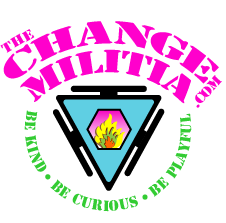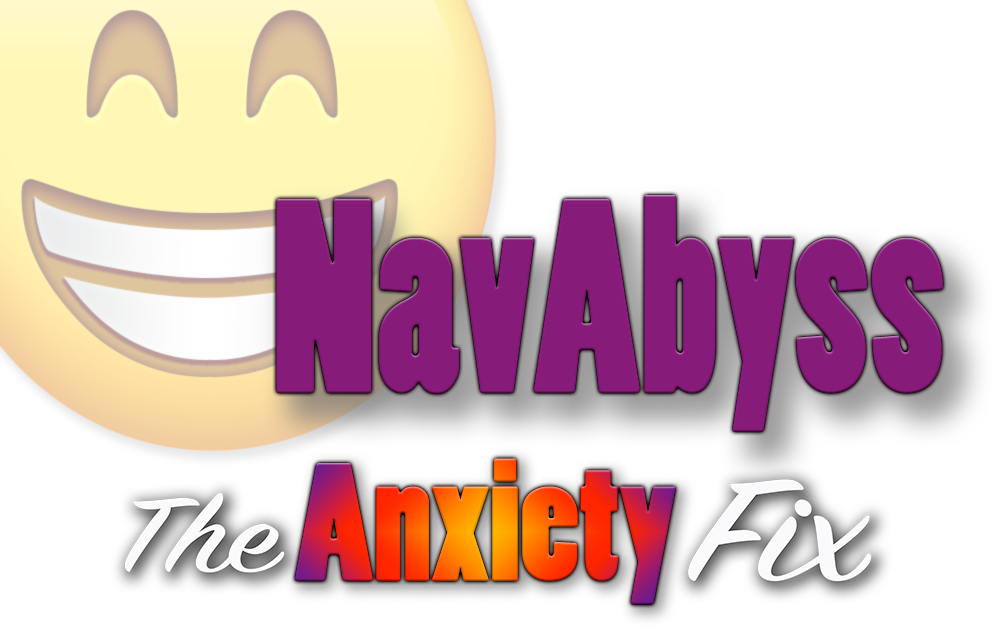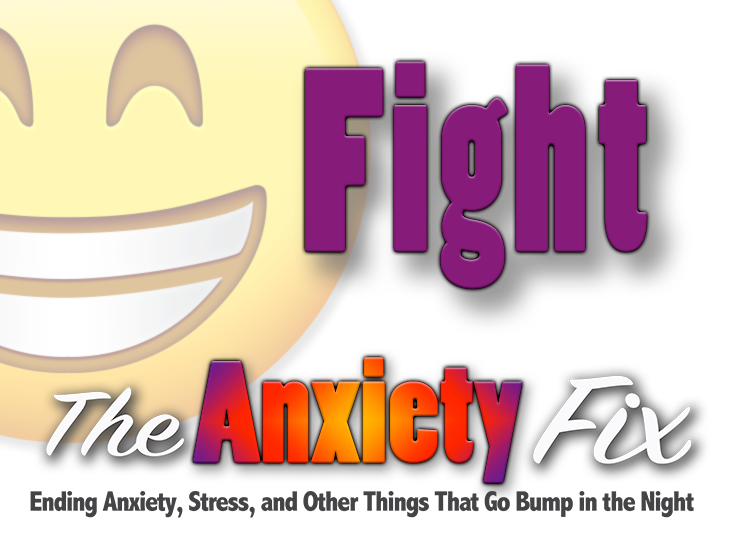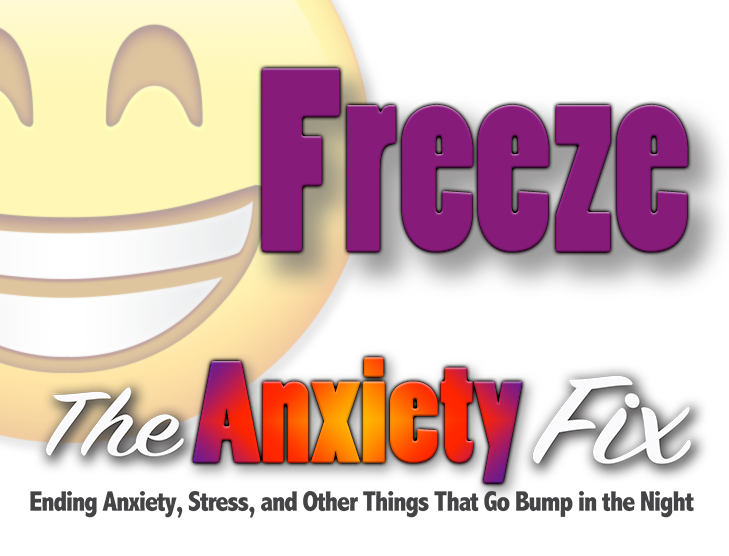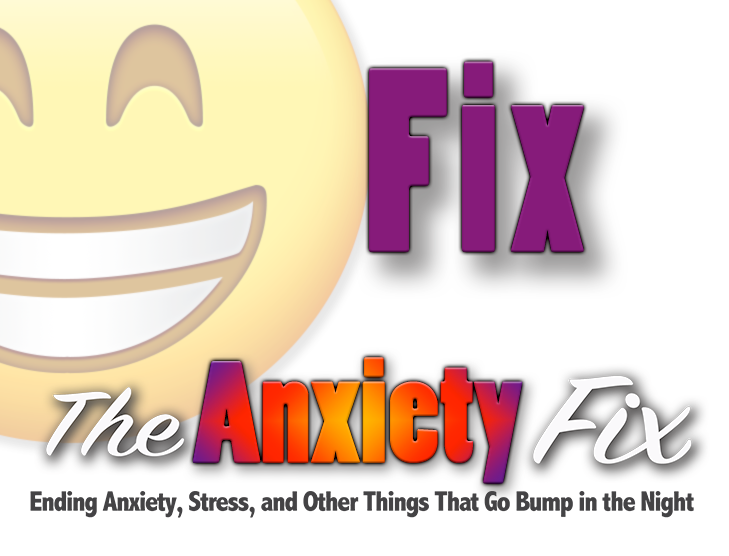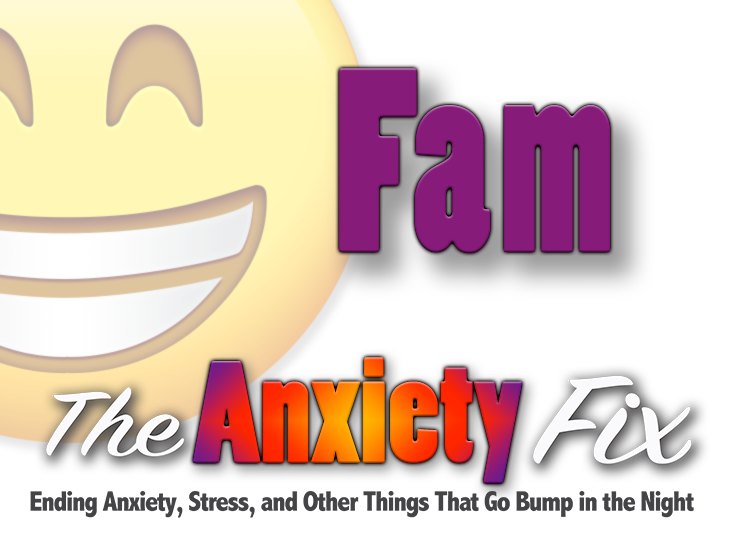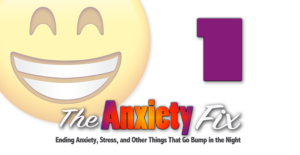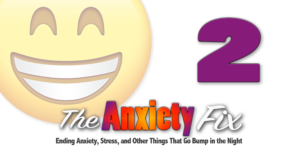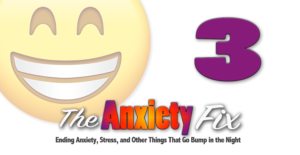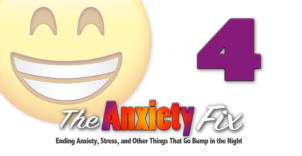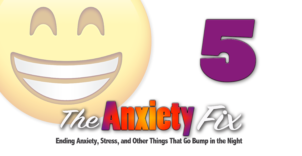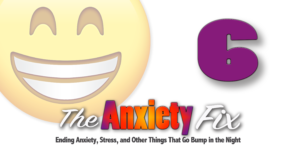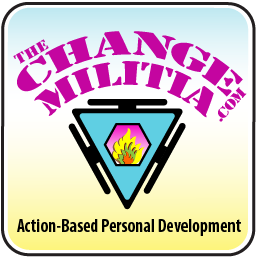
Here is one of the ways to settle and reset your system when you are anxious, stressed, or feeling overwhelmed.
Do one of the Five F’s movements when it feels like you have driven off the cliff or are about to. Remember to start with the Navigating the Abyss video to give you background and context.
The five major ways you react to fear are fight, flight, freeze, fix, and familiar. Most of these happen habitually. They are triggered by your subconscious mind without you even realizing it’s happening until you’re right in the middle of it.
Fix reactions will include wanting to influence, arrange, manage, control, convince, limit, manipulate, maneuver, or compromise. Fix will feel like you are trying to maintain what you are comfortable with by controlling your environment, people, or situations.
Choose this Fix sequence when you want to control or manage conflict by limiting the relative movement of the people, things, situations, thoughts, or feelings near you.
Fix fear feels like you want to influence, manage, or control.
Five F’s Fix Reset Sequence
Detect Fear
The first step is to realize you feel like you want to influence, arrange, manage, control, convince, limit, manipulate, maneuver, or compromise. If you feel your energy ramping up toward anxiety, your subconscious mind will look for a familiar fear pattern to assign. Your fear signal may typically be fix or it may be one of the others and the desire to fix may only come up with certain people, places, or situations.
Acknowledge Fix Signal
Your fear triggers will be habitual. In every situation, you will have a defensive pattern that is waiting to be triggered. When you feel your energy starting to build and it starts to feel uncomfortable, feel for the specific fear signal your subconscious mind is demanding.
If it is fix, your mind will be telling you that you should take charge and do something to alter or maintain circumstances. Fix demands will want you to influence, manage, or control. You will want to convince.
Name Preferred Action
After you detect fear rising in your system, decide what you would rather be doing or feeling. The Fix fear signal is unique because it is telling you what you should do. With Fix, give yourself the permission to not control, to not have a destination. Let your preferred destination, action, goal, or intention be to allow opportunities to unfold without manipulation. Focusing on allowing the discomfort of not fixing will help your mind begin to reconfigure away from the fix anxiety and toward effortless existence. Choosing healthy discomfort creates a trajectory your energy will try to accommodate. Fix fears create limits, not fixing allows the mental and emotional feeling of expansiveness.
(After each step, listen to your internal signals. If it feels like you are ready to reengage with your intended tasks, shift to getting things done. If you still feel hesitant or resistant, go on to the next step.)
Indulge Fix Demand
After you determine that you feel the need to fix and have accepted that you can continue to exist without fixing, look for a physical way to indulge the fix demand. Give your subconscious mind the feeling of fix without stopping or collapsing. Find something that requires balance and the amount of energy necessary to match or exceed your fix signal. In the fitness world, this has the obvious name of balance training.
What that is will depend on your general health, fitness level, and any specific physical limitations. The simplest example would be standing on one foot. Balance exercises require that you engage your core muscles. That engagement is what indulges the fix fear. Look for movements that require you to control your core.
With a fix fear, you won’t be looking for a movement to mimic. Take 30 seconds to feel what you are feeling and then determine you are going to allow yourself to challenge your physical balance instead. This is part of the practice of decision and determination. If you are coming to this practice after your anxiety has already blossomed, the specific fix demand might be obvious. It will require more will power to override it with an alternative balancing movement.
Be creative. Look for balancing movements challenge your current ability. Regular, healthy balancing movements lead to increases in strength and coordination. They will exercise your core and the rest of the muscles that help keep you stable. Making healthy physical efforts part of your daily life will also help to down-regulate your nervous system, lowering your need to fix.
As you indulge the fear signal with balancing movements, your fix anxiety will wane. You are burning up the energy you have stored which satisfies your subconscious mind. If it doesn’t feel like you are getting less anxious, you may not have done a challenging enough balancing movement or you may have another fear signal (fight, flight, freeze, or familiar) that needs to be satisfied. Check-in with what you are feeling. If it still feels like you have some need to fix, find something else balancing to do.
Your balancing movement needs to be a challenge. The challenge is what will indulge the fear, not the balancing.
If simple balancing movements don’t exhaust your anxious energy, add a second variable. Balance on a Bosu Balance Ball or similar. Balance on the toes or heel of your foot. Swing the opposite leg. Or for something really challenging, close your eyes. Hold a weight in one hand or transfer it from one hand to the other. You are looking for increasingly difficult challenges to your balance and your core muscles.
(Listen to your internal signals. If it feels like you are ready to reengage with your intended tasks, shift to getting things done. If you still feel hesitant or resistant, go on to the next step.)
Redirect Fix Movement
After it feels like you have exhausted your anxious energy, the next step will be to add unpredictability. You want to shift away from the controlling and limiting nature of the fix signal by allowing yourself to embrace the unpredictability.
Your indulge movement mimicked your desire to control. To redirect that signal, balance, close your eyes and then don’t control your balance and allow yourself to fall in whichever direction your imbalance takes you. Allow yourself to find ecstatic movements. Get wild and crazy. Try something completely new or foreign. Add something unpredictable to your balance movement. Maybe put on some unfamiliar music and then dance in a way you haven’t danced before.
Be spontaneous, playful, and unstructured. They teach your systems that not controlling, predicting, and managing can be safe. Being playfully spontaneous and doing unstructured things changes the entrenched fix patterns.
Feel for the mental and emotional qualities that accompany the need to control and then contrast them with the sensations of being playful, unstructured, and spontaneous. Controlling thoughts and emotions will feel hard and sharp. Playful will feel soft and fluid. Spontaneous will feel light and effortless.
The goal is to feel your sensations that accompany the change in attitude and disposition as you shift from control to spontaneity and playfulness.
(Listen to your internal signals. If it feels like you are ready to reengage with your intended tasks, shift to getting things done. If you still feel hesitant or resistant, go on to the next step.)
Transitional Fix Movement
Next, take another step away from your fear by gradually organizing your movements into short inspired bursts that challenge your habitual patterns.
Think of movements that spiral out. You might start dancing ecstatically and then organize the dance into circular patterns that transform into outward spiraling patterns. Free form movements like Parkour, Freeform dance, or the BowmToon Stuffle (don’t bother Googling, I just made that one up). You are aiming to stop aiming. You want to teach yourself to loosen up, let go, and playfully exist without trying to have a plan or library of rules. Allow the chaotic movements to resolve in ways that you have never imagined.
The goal is to engage your creative mind so completely that your controlling mind is left penniless, alone and hungry, living under a bridge without bathing or hair care products. You want to go from fixed to unstructured to imaginative. Embrace Chaos and then wrangle it into new creations!
This will be hard. Probably the hardest of the 5 F’s Fear Movements because it requires that movements be internally derived. You are searching for the ability to be spontaneously creative, imaginative, and inspired.
In this step, you are learning to be expansive, to unlimit the images and beliefs you hold. Fix energy feels tight and restrictive. You want to feel an overwhelming sense of wonder. You are feeling for sensations and inspiration in ways you have not previously experienced. You are opening yourself up to epiphanies and revelations.
As I began to write my first book, The Discomfort of Happiness, I found myself in the place I describe above while hiking. In a flash or maybe thunderbolt of inspiration, the question “What if everything I believe is wrong?” came to me. It opened up a floodgate.
Switches flipped in my head, my internal Rubik’s Cube spun into place. I started to examine every belief I had. I looked at my truths, which I discovered were mostly other people’s opinions that I had co-opted and accepted as fact. When I deconstructed these truths, I found fiction, dogma, and hyperbole.
I came to realize my truths weren’t factual – they were familiar.
That idea, familiar as truth, led me to ask why I wanted familiarity. How did typical serve me? And if it didn’t serve me, why did I keep doing it.
As I looked at my truths, I also looked at social truths. I deconstructed collective beliefs and found them to be non-factual. I discovered most truths primarily served to reconfirm the range of familiar and typical sensations, emotions and thoughts. Beliefs are habitual.
Walking in the woods in the fall of 2013 with an overwhelming sense of wonder altered the path of my life. Allow the chaos of the inconceivable to resolve into newly recognizable patterns. Let your life be a revelation.
You will probably have a ton of entrenched resistance to this way of being. It is a new paradigm that your system will gradually adapt to. Begin by loosening your internal reins. Horse around with it until it begins to feel easier. Playfulness will be a huge part of your success. Reach out if you get stuck.
Take Action
Ready, set, GO! You are ready to do the thing you named above in the Name Preferred Action. Allow yourself to hold onto the feeling you created in the previous step and seamlessly flow back into getting things done.
Following the above suggestions will get a lot of energy moving. Use it productively. If you don’t, it will build up in your system and your mind will want to label it as anxiety. As you transition back into your everyday activities, feel the energy and momentum as fuel. Feel it as life force or vitality. Feel it like a superpower. Save the world, do the laundry, paint a masterpiece, create a spreadsheet, go to the gym, but do something beneficial. Do something that has value to you. Use your superpower wisely, don’t let it reconfigure to anxiety
Your long-term goal will be to go through your day building and expending your energy as efficiently and productively as possible. When you rest, feel the rejuvenation it allows, not as weakness or lack of will. Every time you feel your energy start to build toward anxiety, start at the beginning of this movement and follow the steps. The sooner you decide to move away from your anxiety habit, the easier it will be to transition back to productivity.
Here is a description of each of your typical fear responses.
Your personality is the sum total of your habits. Every habit has a bunch of moving parts – physical, mental, and emotional. Habits have actions, reactions, and responses. Let’s call these things components.
The most influential components of your habits are the ones attached to your fears. You react in habitual ways to habitual triggers. Those reactions create a cascade of other reactions that form movements, thoughts, and emotions. The sequence of these reactions shape a large part of your personality. Those reactions influence how you interact and respond to potential threats and opportunities.
You are who, what, and how you are based primarily on your habitual reactions. And fear is the main trigger for those habitual reactions nearly 100% of the time.
The five major ways you react to fear are fight, flight, freeze, fix, and familiar. Most of these happen habitually. They are triggered by your subconscious mind sometimes without you even realizing it’s happening. You are probably familiar with fight, flight, and freeze.
Fight fear feels like you want to engage. Fight reactions would include anger, frustration, conflict, contradiction, and altercation (physical, mental, or emotional). Fight will feel like you are trying to create distance by pushing things, peoples, ideas, possibilities, thoughts, energies and emotions away from you. You might also fight external influences. Fight will have lots of active resistance to change.
Flight fear feels like you want to disengage. Flight reactions are things like distancing, running away, distraction, and avoidance. How often have you been chatting and someone inexplicably interrupts or changes the subject? That is a flight response. They fear the potential trajectory of the conversation and seek to move away from it. Every distraction is a flight response. Spacing out and over-talking are flight responses. Flight will be a desire to control change.
Freeze fear feels like you want to stop or limit change. Freeze is expressed as stubbornness, inattention, and shutting down (physically, mentally, or emotionally). Emotionally, men have a greater tendency to use the freeze response than women. When things get a little too intimate, we men tend to forcefully stop our emotions because of a fear of appearing weak or the fear of losing control … or the subconscious fear of not knowing what might happen next. Stagnation is a freeze response. Freeze will feel hard and inflexible. Surrender, submission, quitting, and resignation are freeze responses because they all seek to stop something. Got something in your life that is lifeless and stagnant? If so, there is freeze fear underneath it somewhere.
Fix and Familiar may be new fear responses to you, but they’re equally as common as the first three. You may even find yourself nodding along as you read their descriptions, identifying with how you tend to react in those ways.
Fix fear will feel like you want to control, manage, or manipulate. Fix is what you do to resolve threats, to find some sort of balance. Do you bargain to find some middle ground, remedy, or compromise? Do you placate, justify, or make excuses? Do you frantically try to find a way to make your fear go away by changing something or someone in your environment? If so, you are a fixer. “Yeah, but” is a fix response. Parenting can feel like fixing much of the time. Do you compromise to appease? Are you looking for resolution or avoid conflict? The desire to assuage, placate, coerce, manipulate, seduce, moderate, or convince are fix responses. Fix responses will seek to balance conflicts, threats, and opportunities. Fix will feel like you are trying to balance conflicting or uncomfortable possibilities.
Familiar fear will feel like you need to do something recognizable, a repeat of a pattern.Familiar is usually your desire to physically, mentally, or emotionally reproduce or replicate something in hopes of having a known result. Habits will always have some aspect of familiar – the desire to replicate some past event and the feelings, thoughts, or emotions that resulted. Do you go to a gym or brewery after a particularly unpleasant day with the hope that it will reduce your stress because it has worked before? Doing Crossfit or yoga to lessen your stress is a pattern. Getting drunk regularly to mentally and emotionally escape is a fear response that replicates past patterns. Exercise and inebriation may work in the short term but don’t address the underlying pattern and dysfunctional habits. Exercise is healthier than getting drunk, but both are addressing the symptoms and not the cause. (Addressing the cause would be changing the factors that contributed to your shitty day.)
Do you want to completely eliminate anxiety, stress, and overwhelm? If so, then follow the steps in this program and spend enough time on each to really get a feel for them. Reach out with any questions.
When you are ready, check out our other program, The Change Militia. It is an action-based personal development program. You are going to need to do something with all the energy you are going to free up after you conquer your anxiety. The Change Militia will help you focus on what is important, achieve your goals, and keep you balanced and energized.
Our primary program, The Change Militia, is a subscription-based program offering daily concepts, movements, meditations, and things to focus on to help you supercharge your personal growth.
It is action-based with an amazing community of people. If offers a go-at-your-own-pace model to help you maximize your potential, increase your happiness, and find greater fulfillment. There is also a group call every week to help you relate others’ experiences to your situation. Click the image above for more information and to sign-up.
